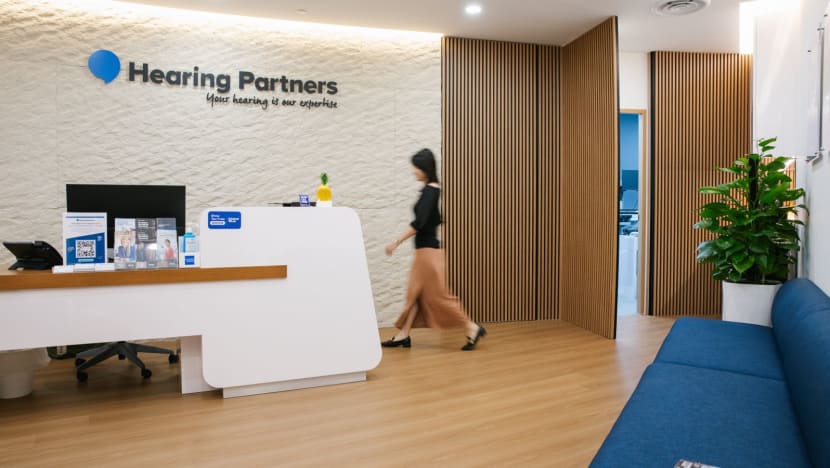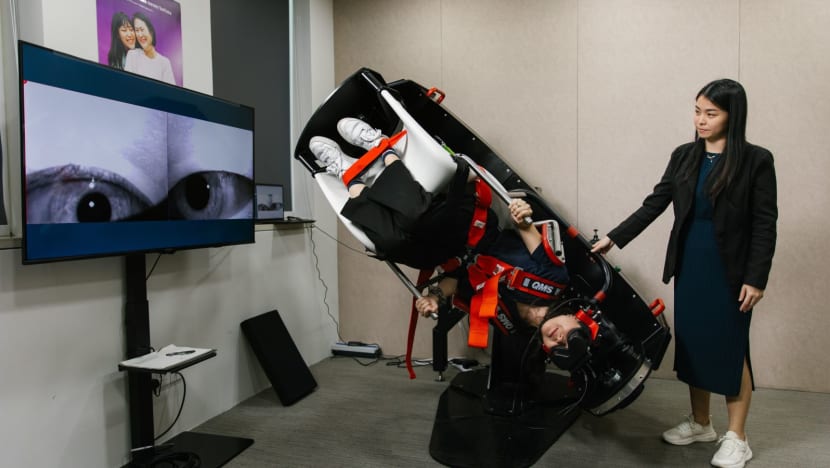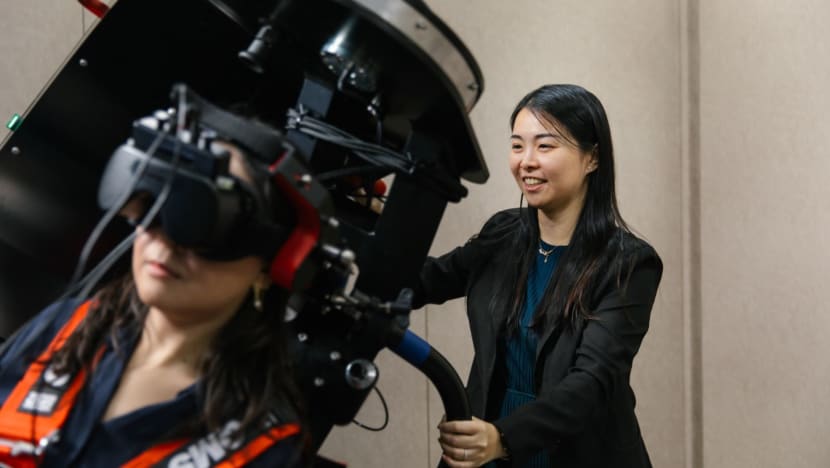When the world spins: Understanding benign paroxysmal positional vertigo
Living with BPPV means navigating a world where severe dizziness can strike without warning, disrupting everyday life. Senior clinical audiologist Jennifer Lee unpacks this inner ear disorder, its effects and how the TRV Chair could provide relief.

Hearing Partners Camden Medical offers solutions for hearing and balance disorders. Photos: Hearing Partners

This audio is generated by an AI tool.
It started with an unsettling moment in the pool. Ms Sarah Chen*, a competitive swimmer in her 40s, was in the middle of a training session when a sudden wave of vertigo swept over her. Though brief, the disorienting sensation left her shaken, as if she had lost control of her own body in the water. Unfortunately, it was not a one-off episode. The vertigo returned each time she turned her head to breathe during backstroke or attempted a backflip, eroding her confidence as a swimmer.
Ms Chen was later diagnosed with benign paroxysmal positional vertigo (BPPV) and received treatment at Hearing Partners Camden Medical. This condition occurs when tiny crystals in the inner ear become dislodged and disrupt the vestibular system, which helps maintain balance. Causes range from head trauma and ear infections to ageing and even Vitamin D deficiency.
But BPPV doesn’t just cause dizziness – it can put life on hold. Imagine never knowing when the room might start spinning uncontrollably or when nausea might strike. For many people living with BPPV, this unpredictability creates constant anxiety: Will it happen at work? While driving? Just getting out of bed?
“BPPV significantly disrupts daily activities, affecting one’s ability to work, exercise and socialise,” said Ms Jennifer Lee, senior clinical audiologist at Hearing Partners. “Severe cases – with symptoms like intense spinning sensations, dizziness and balance issues – can lead to falls and injuries, particularly in older adults or those with pre-existing conditions.”
WHY SOME CASES ARE HARDER TO DIAGNOSE AND TREAT
According to Ms Lee, BPPV is typically diagnosed through clinical assessments and treated with repositioning techniques like the Epley manoeuvre, a series of guided head and body movements that help dislodged crystals return to their proper position in the inner ear.
However, diagnosis is not always straightforward, as dizziness and nausea are common symptoms across multiple conditions. “Patients with chronic or complex BPPV may face challenges such as misdiagnosis or incomplete resolution of symptoms due to overlapping vestibular disorders,” Ms Lee explained.
She also noted that not all patients respond to standard manoeuvres, particularly in cases involving multiple canals or conditions like vestibular migraines. “This highlights the need for personalised treatment strategies,” she added.
THE TRV CHAIR: PRECISION MEETS RELIEF
For BPPV patients who do not respond to standard treatments, the TRV Chair offers new hope. Using advanced diagnostic and repositioning technology, it provides a more targeted approach, especially for complex or persistent cases.
The TRV Chair combines 360-degree rotation and eye movement tracking technology to pinpoint affected areas and perform precise repositioning manoeuvres. For greater effectiveness, it can also apply kinetic knocks – small, controlled movements or vibrations – designed to help dislodged crystals move more quickly through the inner ear canals during treatments. By guiding these movements with greater accuracy, the TRV Chair can potentially accelerate the repositioning process, leading to faster and more effective symptom relief, noted Ms Lee.

Available exclusively at Hearing Partners Camden Medical, the TRV Chair is part of the clinic’s commitment to providing advanced solutions for hearing and balance disorders. The technology has shown effectiveness in most cases, shared Ms Lee. “Four out of five patients treated with the chair experienced significant symptom relief. One patient, however, could not complete treatment due to discomfort caused by an uncontrolled vestibular migraine.”
Ms Chen was among the patients who reported improvement in symptoms after undergoing the TRV Chair treatment. Within weeks of her first session, she was back in the pool and went on to participate in swimming competitions, said Ms Lee. Another patient, a man in his 70s who had struggled with recurring BPPV for years, found immediate relief after one treatment, she added.
WHAT TO EXPECT DURING AND AFTER TREATMENT
The TRV Chair is suitable for most patients, but certain medical conditions require caution. According to Ms Lee, individuals with a history of brain aneurysms or haemorrhages should not undergo this treatment. Pregnant women and those with heart conditions or high blood pressure are advised to seek medical guidance before proceeding.
Before the session, patients should dress comfortably, avoid heavy meals and refrain from taking medications like anti-dizziness drugs that suppress eye movements. Other health and migraine-preventive medications can be continued.
Each session lasts 30 to 60 minutes, with the number of treatments varying based on individual needs. Many patients experience relief after the first session, but intricate cases may require additional treatments. Research backs this up, with a 2020 study published in The Journal of International Advanced Otology finding that 60 per cent of patients experienced symptom relief after one session.

ADVANCED CARE FOR COMPLEX CASES
While the TRV Chair is as effective as traditional methods for treating BPPV, it offers distinct advantages for specialised cases, said Ms Lee. “The TRV Chair is particularly beneficial for treating multi-canal BPPV, as its precise and controlled movements can better target affected areas. This makes it especially useful for patients who face additional challenges such as obesity, anxiety, or mobility and neck issues,” she explained.
She highlighted its success in difficult cases, pointing to a study published in The Journal of International Advanced Otology that reported a 92.4 per cent success rate for patients with refractory BPPV who had not responded to conventional treatments.
Ms Lee noted, however, that even though the TRV Chair provides these benefits, traditional methods remain effective for many patients. “The choice between the TRV Chair and manual techniques depends on individual factors, the type of BPPV and the availability of the technology.”
She also stressed the importance of seeking medical attention if BPPV is suspected. While waiting for a professional consult, Ms Lee advised patients to avoid sudden head movements and ensure adequate Vitamin D intake to help manage symptoms.
Don’t let BPPV dictate your life. Take control of your well-being and book an appointment at Hearing Partners to experience the benefits of the TRV Chair.
*The patient’s name has been changed to protect her privacy.















